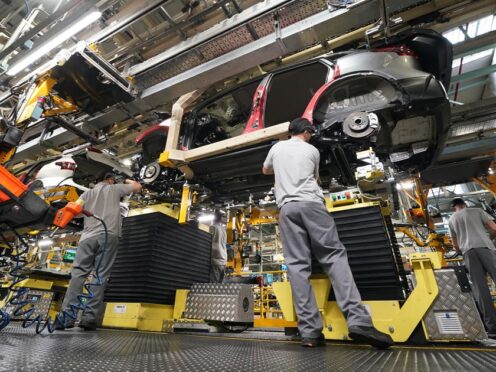UK car production enjoyed its best January in three years, according to new data released by the Society of Motor Manufacturers and Traders (SMMT).
Total output rose by 21 per cent to 82,997 units, making it the fifth month of growth for the sector in a row. Much of the increase came through the easing of supply chain issues, with the availability of crucial semiconductors improving.
The vast majority of vehicles were made for export, with shipments overseas up by 11.6 per cent to 62,938 units – an increase of 6,559.
UK car production off to a fast start in January
🚗 manufacturing output grows 21.0% in January, to 82,997🌍Export volumes up 11.6%, while production for UK market surges 64.5%⚡️Electrified vehicle production continues to grow, up 4.5% to 29,590 unitshttps://t.co/2kd4oUXLIN pic.twitter.com/3ZTqi3KaU5
— SMMT (@SMMT) February 29, 2024
However, it was the output for the home market which saw the largest volume growth, up by an additional 7,863 units to 20,059 overall. The EU took the most British-built cars, too, taking in more than half of exports at 53.2 per cent.
It was followed by the US, China, Japan and Australia with 15, 10.5, 2.8 and 2.3 per cent of exports respectively. However, shipments to the EU, US and China all increased during the month.
The production of battery-electric (BEV), plug-in hybrid (PHEV) and hybrid (HEV) vehicles increased by a combined 4.5 per cent to 29,590 units, accounting for 35.7 per cent of overall output.
The bulk of car production was for export (75.8%), with overseas shipments up 11.6% to 62,938 units – a rise of 6,559.
The largest global markets for British-built cars:
🇪🇺EU 53.2%🇺🇸US 15.0%🇨🇳China 10.5%🇯🇵Japan 2.8%🇦🇺Australia 2.3%https://t.co/2kd4oUXLIN pic.twitter.com/yYOWgRfw7l
— SMMT (@SMMT) February 29, 2024
Chief executive Mike Hawes said: “A positive start to the year for UK car production bodes well for the industry and the many thousands of livelihoods on which it depends.’
But he warned: “There can be no room for complacency, however, given economic headwinds and geopolitical tensions.
“There must be a relentless commitment to competitiveness, building on the significant recent investments in the sector.
“The forthcoming Budget is a chance for the government to do just that by introducing measures to boost UK automotive manufacturing, focused on energy, investment competitiveness and market demand.”
